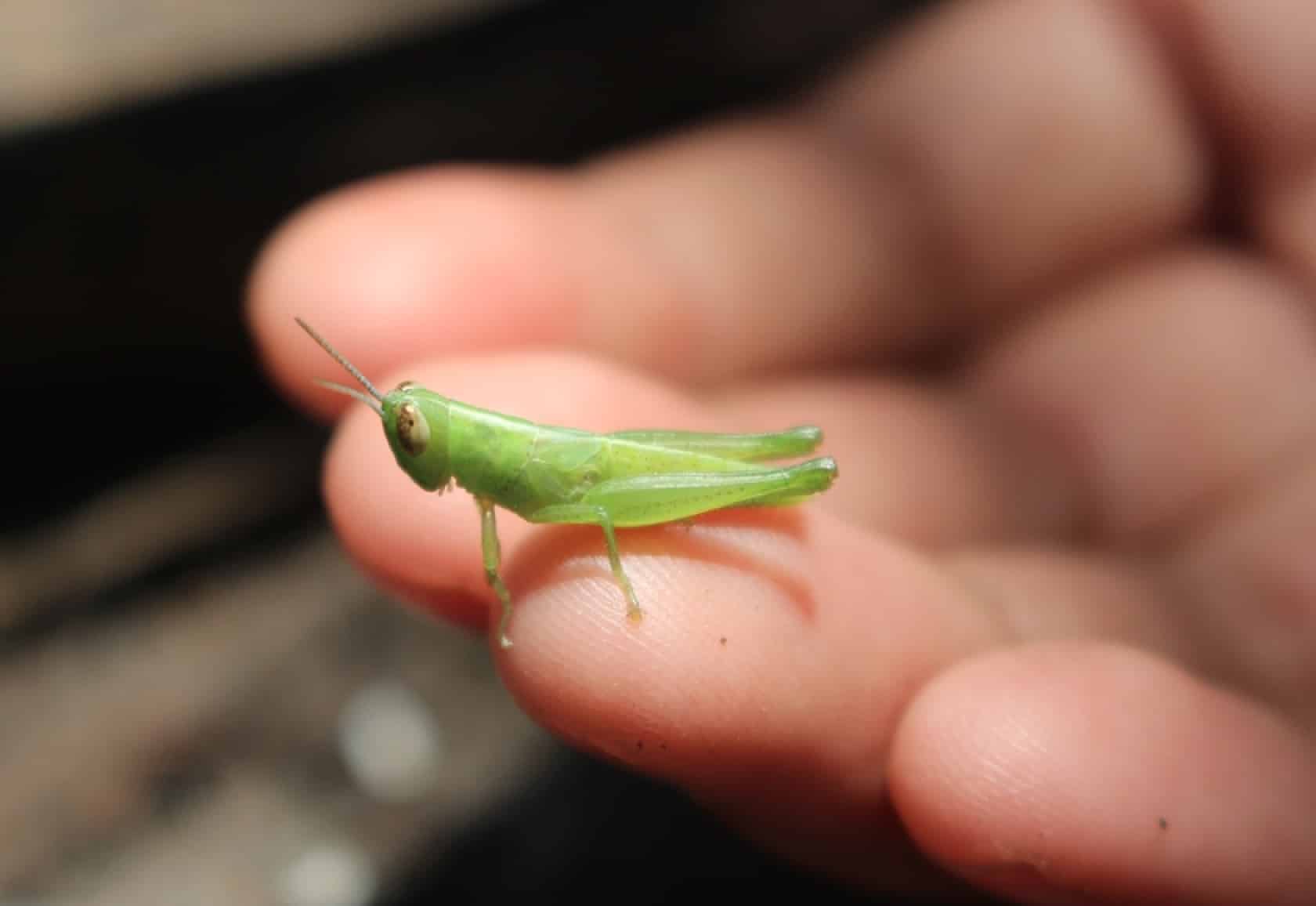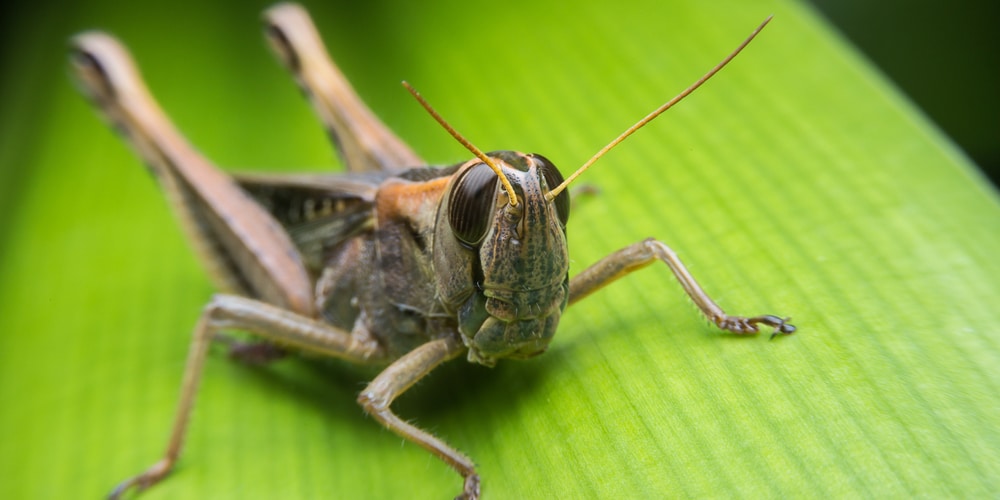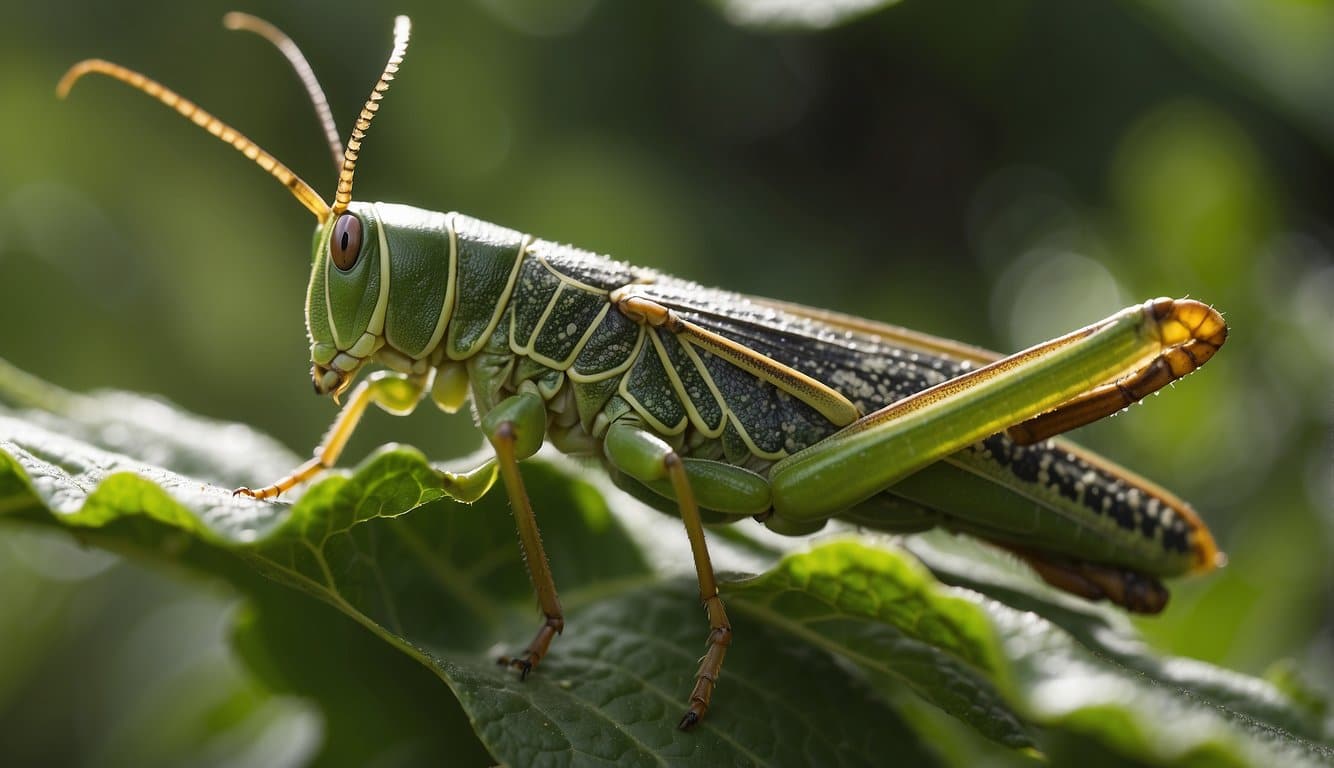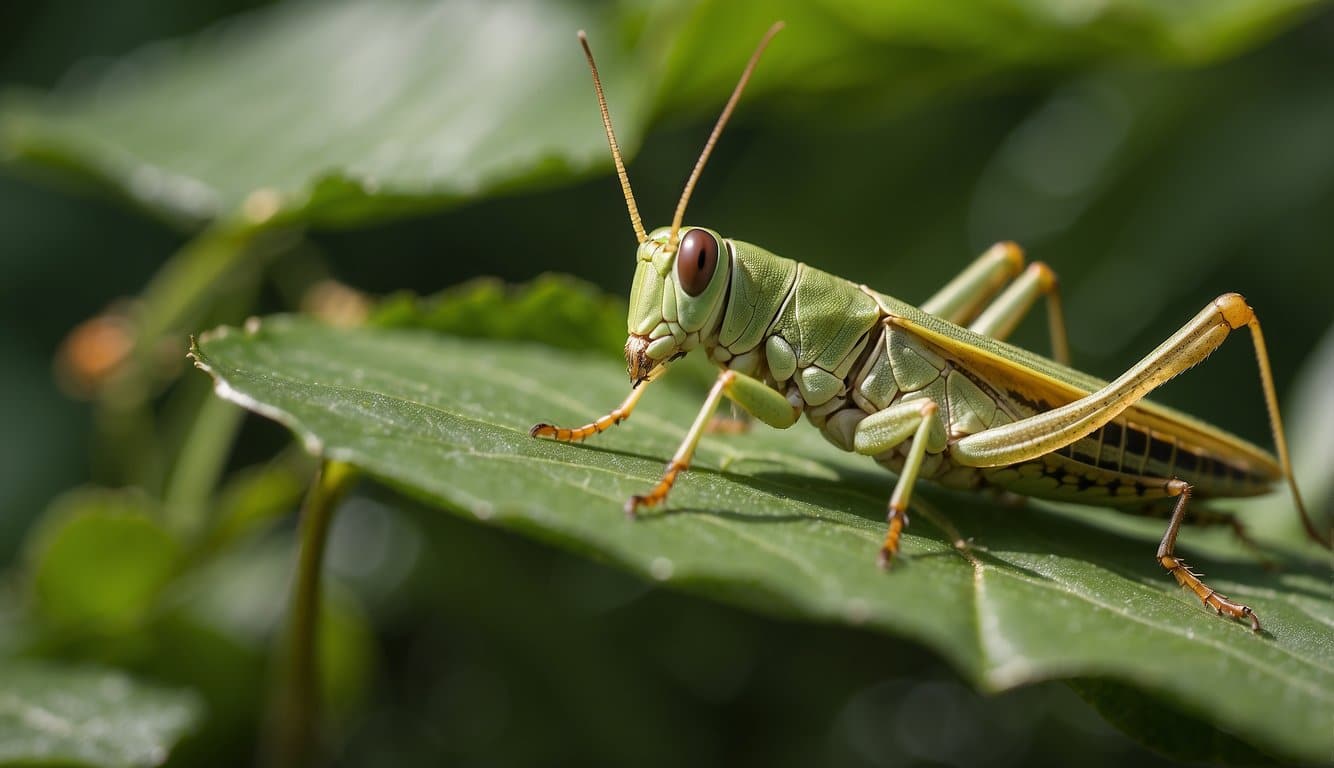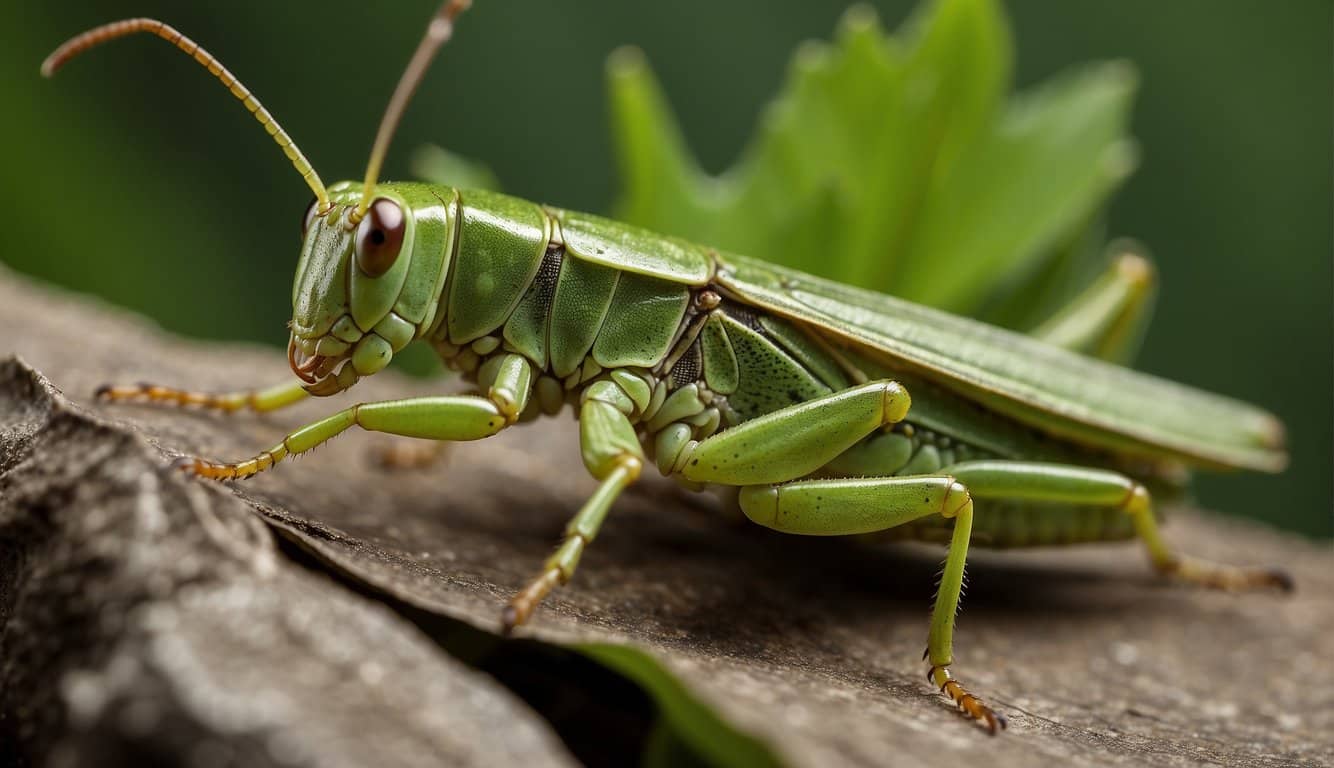| Question | Do Grasshoppers Bite? |
|---|---|
| Answer | Rarely, and usually without harm. |
| More Info |
|
Grasshoppers are primarily herbivores and generally do not bite humans. They have mouthparts designed for chewing plant material, not for biting flesh. However, if handled or provoked, some grasshoppers might attempt a “bite” as a defense mechanism.
These bites are usually harmless to humans and more surprising than painful. It’s rare for a grasshopper bite to break the skin or cause any significant discomfort.
Grasshoppers (Very Minimal) Biting Capabilities
Grasshoppers, with their long legs and ability to leap great distances, are well-known for their plant-eating habits. It’s rare for these insects to bite humans, but they do possess the physical capability to do so.
Mandibles Designed for Plants:
Grasshoppers are equipped with strong mandibles primarily designed to munch on a variety of plants, not for biting predators or humans.
- Biting instances: If they feel threatened or are handled roughly.
- Intensity of bite: Generally mild, akin to a light pinch, unlikely to break skin.
How They Respond to Threats:
When grasshoppers sense danger, their first instinct is to leap away. Biting is not their go-to defense mechanism.
- Common reaction: Jumping to escape
- Rare reaction: Biting or spitting a bitter substance
Human Interaction:
- Severity: For humans, a grasshopper bite is more surprising than harmful. There’s no venom or significant risk of infection to worry about.
- Treatment: In the rare event of a bite, simple first aid with soap and water is adequate.
Safety Considerations:
- Provocation: Avoid handling grasshoppers to prevent the unlikely chance of a bite.
- Awareness: Be mindful that grasshoppers are more interested in plants than in people.
Potential Harm to Humans
When considering the interaction between grasshoppers and humans, focus primarily falls on two specific concerns: the physical effects of their bites and the risk of allergic reactions.
Physical Effects of Bites
Grasshoppers possess mouthparts designed for chewing plant material, not for biting predators or humans. In the rare event of a bite, the physical effect is typically minor. Individuals may experience a small, red bump resembling a mosquito bite. The grasshopper’s bite might also produce a slight pinch feeling, but it is not known to break the skin or cause serious injury.
Risk of Allergic Reactions
The likelihood of an allergic reaction to a grasshopper bite is relatively low, considering their bites do not typically puncture human skin. However, as with any exposure to insects, there is a small possibility for an individual to have an allergic reaction to proteins in the grasshopper’s saliva. Those with known allergies to insect bites should exercise caution when encountering grasshoppers.
Grasshopper Behavior and Diet
Grasshoppers play a distinct role in ecosystems, where their behavior and diet directly influence their interactions with plants, predators, and even humans.
Habitat and Feeding Patterns
Grasshoppers are typically found in meadows, fields, and other areas where vegetation is abundant. They possess a herbivorous diet, feeding primarily on leaves, grasses, and cereal crops, which makes them important herbivores in many terrestrial ecosystems. Their powerful jaws are well-adapted for chewing plant material.
- Preferred Plants: Grasshoppers favor a range of plant species including grasses, weeds, and cereal crops like wheat and barley.
- Eating Habits: They consume approximately half their body weight in plants each day, which can lead to significant agricultural damage in dense populations.
Interaction With Humans
While grasshoppers generally avoid human contact, they can interact with people when their habitats overlap with human activity. Despite possessing the ability to bite, grasshoppers rarely bite humans and typically only do so when they feel threatened or provoked. Such incidents are not only unusual but also result in minimal harm to people due to the grasshopper’s weak bite force.
- Potential for Harm: Bites may only cause a slight pinch feeling and are not known to transmit diseases or cause serious injury.
- Physical Response to Threat: When grasshoppers feel cornered, they might employ their legs to kick as a defense mechanism.
Preventative Measures and Treatment
When encountering grasshoppers, individuals can take steps to reduce the likelihood of bites and adequately treat any that occur.
Avoidance Strategies
To minimize encounters with grasshoppers, one might:
- Wear long-sleeved shirts and pants when walking through grassy areas where grasshoppers are prevalent.
- Use insect repellent that might deter grasshoppers from coming close.
- Stay calm when near grasshoppers, as they are less likely to bite if they do not feel threatened.
First Aid for Bites
In the rare event of a grasshopper bite, the following actions are recommended:
- Clean the bite area with soap and water to reduce the risk of infection.
- Apply a cold compress to relieve any pain or swelling.
- Seek medical attention if signs of allergic reactions or infection, such as severe redness, warmth, or pus, appear.
Frequently Asked Questions
Grasshoppers, ubiquitous across the globe, seldom pose a threat to humans in terms of physical harm. The bite of a grasshopper, while rare, is generally considered non-threatening. This section provides insightful answers to common queries regarding the potential for grasshoppers to bite and the implications of such an incident.
What are the symptoms of a grasshopper bite?
The symptoms of a grasshopper bite are typically minimal, often resulting in little more than a mild pinch sensation. There is usually no noticeable mark or intense pain associated with the bite.
Is it possible for a grasshopper to inflict pain with a bite?
A grasshopper can cause a minor pain when it bites, mainly because they are not equipped with teeth designed to penetrate human skin. The pain felt is typically not intense and is comparable to a light pinch.
Can a grasshopper bite cause any illness in humans?
Grasshopper bites are not known to transmit diseases or cause illness in humans. Their mandibles are not adept at breaking skin, and there is a low risk of infection from a bite.
What is the appearance of a bite from a grasshopper?
A bite from a grasshopper rarely leaves a noticeable mark on human skin. If any mark is visible, it tends to be a small, red spot which goes away quickly without any significant reaction.
Are there any species of grasshoppers that are considered harmful to humans?
There are no grasshopper species known to be directly harmful to humans in terms of bites or stings. The main concern with certain species, such as locusts, is their capacity to swarm and cause extensive damage to crops.
Do grasshoppers possess the ability to bite humans with teeth?
Grasshoppers do not have teeth in the same way mammals do. They have mandibles designed for cutting vegetation, not for biting flesh.
While they can attempt to bite if provoked or threatened, they are not capable of harming human skin significantly.
